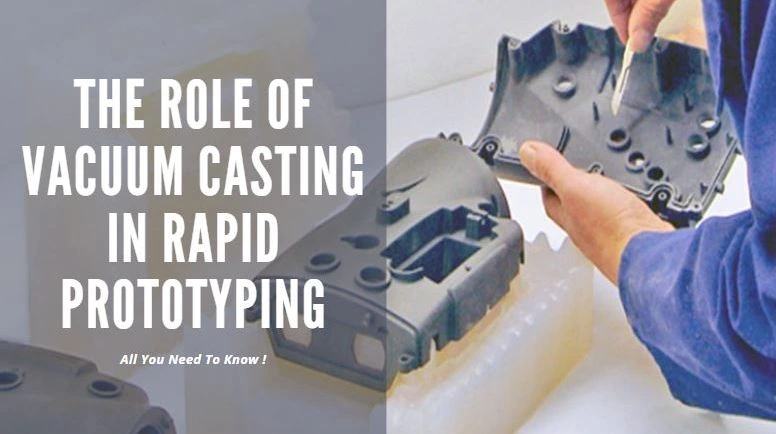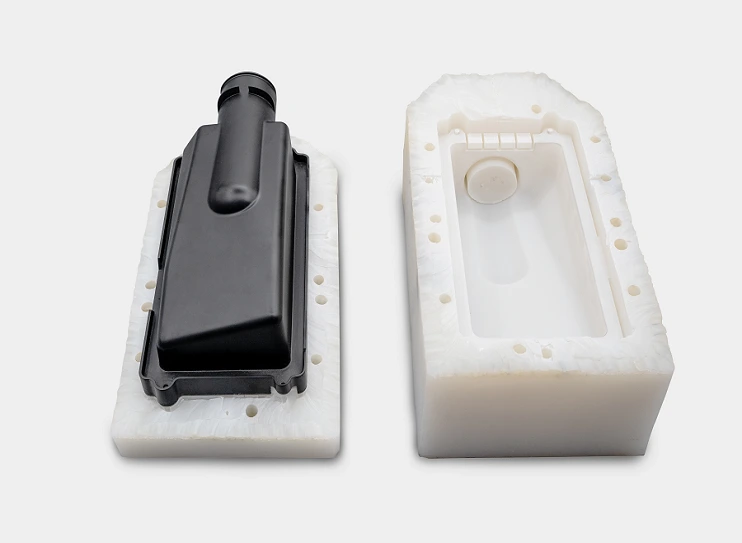The Role of Vacuum Casting in Rapid Prototyping

Vacuum casting is an important part of rapid prototyping. It allows designers to create models quickly and cheaply without having to wait for expensive machines to produce them. However, before starting any project, it’s vital to understand what the benefits are and how they apply to your specific situation.
We are about to find out all the details in this article.
What is Vacuum Casting?
Vacuum casting is a process in which a hollow object is created in a mold by a casting process, and then a second rigid, thick resin is poured into the mold. This resin cures, and then the resulting two pieces are separated by a saw. The result is a hollow object with a rigid exterior. A similar technique was used by the ancient Egyptians to produce mummy cases and jewelry.
Vacuum casting is a common method used in prototype machining. This process uses a vacuum to create a three-dimensional object from a model or template. The process is used in rapid prototyping, which is the process of creating a prototype as quickly as possible to test and improve the design.
Product developers or product designers use vacuum casting services to create small, intricate plastic parts. Here are some of the features of vacuum casting:
Vacuum casting is ideal for small to medium-sized production runs.
The process is relatively quick and simple, which keeps costs down.
The process is highly accurate, resulting in castings with very tight tolerances.
Vacuum casting produces very little waste material.
The process is very versatile and can be used to cast a wide range of materials.
Benefits of Vacuum Casting
If you've ever been to a vacuum casting facility, you know that the process can be pretty amazing. Let’s discover in detail:
Fast
The biggest benefit of vacuum casting is that it’s fast. Casting a part in the resin can take minutes or hours, depending on how large the part is. With rapid prototyping, you want to be able to create as many copies of the part as possible as quickly as possible so that you can test them and find any design problems. Casting a part in resin allows you to do this quickly and efficiently.
Finishing
Another benefit of vacuum casting is that it’s accurate. Casting a part in resin means that you won’t have any gaps or errors in the finished product. This accuracy allows you to get precise details from you.

Why manufacturers prefer vacuum casting for Rapid Prototyping
Top Quality
If you're looking for top-quality parts and components, you can't go wrong with vacuum casting. You can get parts with accurate geometric details with vacuum casting.
The main benefit of vacuum casting is the accuracy with which it can create parts. The process is capable of creating parts that are within 0.005 inches of the desired dimensions. This degree of accuracy is essential for many industries, such as the aerospace and medical industries.
Therefore, manufacturers are using this method these days.
Top Quality Design
Another benefit of vacuum casting is the fact that it can be used to create parts with very intricate designs. The process can create parts with very thin walls and sharp corners. This is essential for many applications where parts need to be very strong and lightweight.
Material Selection
Vacuum casting is a versatile manufacturing process that can be used to produce parts in a wide range of materials. The material selection for vacuum casting is determined by the application and the desired properties of the finished part.
The most common materials used in vacuum casting are urethanes. Urethanes offer a wide range of properties, including flexibility, abrasion resistance, and the ability to reproduce fine detail. Other materials that can be cast using the vacuum casting process include metals, plastics, and ceramics.
Durable and Strong products
One of the biggest benefits is that it creates extremely strong and durable parts. This is because the process of vacuum casting eliminates many of the voids and porosity that can weaken parts. As a result, vacuum cast parts are often much stronger and more durable than those made using other methods.
Less Expensive
It is less expensive than other manufacturing methods, such as injection molding. As a result, products made with vacuum cleaning are cheaper than other manufacturing methods.
Conclusion
Vacuum casting is an incredibly versatile process that can be applied to a wide range of projects. It has many benefits, such as being quick and cheap, but before starting any project it’s important to understand what they are and how they apply to your specific situation. By doing this, you can avoid potential problems and get the most out of vacuum casting – whether you’re looking to create a model for rapid prototyping or just need a quick and easy way to test a concept.
